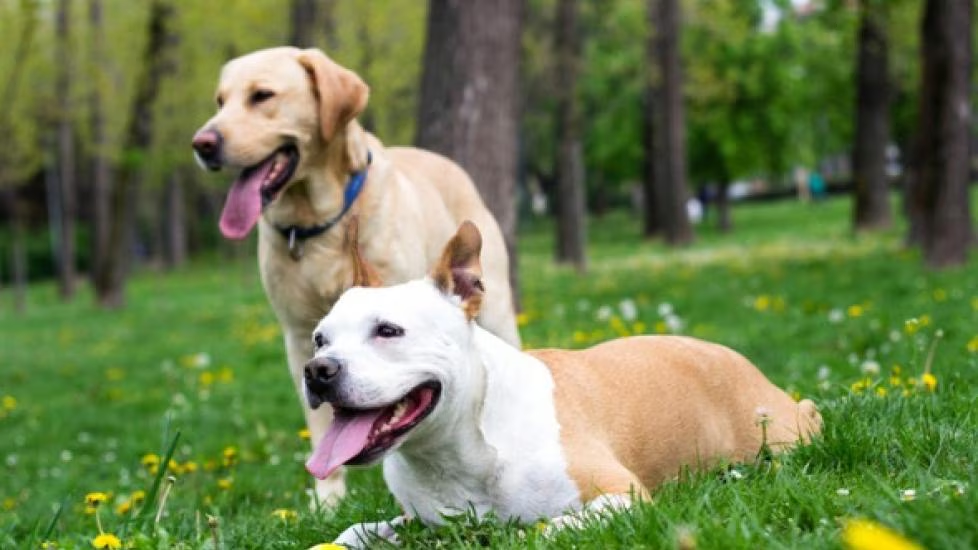Fleas are more than just a nuisance—they can cause severe discomfort for your dog and even lead to health complications like anemia, skin infections, or allergic reactions. These tiny pests are relentless, but the good news is that there are multiple effective strategies to keep your dog flea-free and happy.
From shampoos to environmental tactics, here are nine proven ways to stop fleas from biting your dog.
1. Use a Vet-Approved Flea Preventative
Modern veterinary medicine offers a variety of flea preventatives, including topical treatments, oral medications, and collars. These options are highly effective in killing and repelling fleas before they can cause harm.
- Topical Treatments: Products like spot-on treatments work by spreading over your dog’s skin to kill fleas on contact.
- Oral Medications: These pills work from the inside out, killing fleas when they bite your dog.
- Flea Collars: Long-lasting collars provide continuous flea protection for months.
Pro Tip: Always consult your veterinarian to select the best preventative for your dog’s size, age, and health condition.
2. Bathe Your Dog with Flea Shampoo
A flea shampoo can provide immediate relief if your dog is already infested. These shampoos are formulated to kill fleas on contact and can also soothe irritated skin.
- How to Use:
- Wet your dog’s coat thoroughly.
- Lather the shampoo, paying close attention to areas like the neck, belly, and tail.
- Let it sit for 5-10 minutes before rinsing thoroughly.
Caution: Don’t overuse flea shampoos, as they can dry out your dog’s skin. Follow the product instructions carefully.
3. Wash Your Dog’s Bedding Regularly
Fleas and their eggs can live in your dog’s bedding, making it a hotspot for reinfestation. Washing your dog’s bedding weekly in hot water can help eliminate fleas and larvae.
- Pro Tip: Use a pet-safe detergent and dry the bedding on high heat to ensure all fleas and eggs are killed.
4. Keep Your Home Clean and Vacuum Often
Fleas can hide in carpets, furniture, and crevices. Regular vacuuming is one of the simplest ways to eliminate fleas and their eggs from your home.
- Focus Areas:
- Carpets and rugs.
- Baseboards and corners.
- Upholstered furniture.
Pro Tip: Dispose of the vacuum bag immediately after cleaning to prevent fleas from escaping back into your home.
5. Treat Your Yard
Fleas often hitch a ride on your dog from outdoor environments. Treating your yard can drastically reduce the risk of infestation.
- Steps to Take:
- Mow the lawn regularly to reduce flea hiding spots.
- Use pet-safe insecticides or diatomaceous earth to treat outdoor areas.
- Remove debris, such as piles of leaves or wood, where fleas can thrive.
6. Use Natural Flea Repellents
If you prefer a chemical-free approach, there are several natural remedies you can try.
- Apple Cider Vinegar Spray: Dilute apple cider vinegar with water and spray it on your dog’s coat to repel fleas.
- Essential Oils: Certain oils like lavender, cedarwood, and lemongrass can repel fleas. Always dilute them properly and ensure they’re safe for pets before use.
Caution: Some natural remedies may not be as effective as veterinary-approved treatments. Always monitor your dog for signs of continued infestation.
7. Groom Your Dog Regularly with a Flea Comb
A flea comb is a simple yet effective tool for removing fleas from your dog’s coat. The fine teeth of the comb catch fleas, eggs, and dirt.
- How to Use:
- Comb your dog’s fur, focusing on areas like the neck, tail, and underbelly.
- Dip the comb in soapy water after each pass to kill the fleas.
Pro Tip: Groom your dog in a well-lit area to spot fleas more easily.
8. Prevent Flea Infestations in Multi-Pet Homes
If you have multiple pets, fleas can quickly spread between them. Ensuring all pets in your household are on flea preventatives is crucial.
- Steps to Take:
- Treat all pets simultaneously, even if only one shows signs of fleas.
- Wash shared bedding and toys regularly.
- Keep pets indoors during peak flea seasons.
9. Regular Veterinary Check-Ups
Your veterinarian is your best ally in managing and preventing fleas. Regular check-ups ensure your dog remains flea-free and helps catch any infestations early.
- Benefits:
- Vets can recommend the latest and most effective flea treatments.
- They can identify skin conditions or allergies caused by fleas and offer treatment.
Pro Tip: Schedule a vet visit at least once a year, or more frequently if your dog is prone to flea infestations.
The Importance of Flea Prevention
Fleas are not just a nuisance—they can lead to serious health issues for your dog, including:
- Flea Allergy Dermatitis: An allergic reaction to flea saliva that causes intense itching and skin irritation.
- Anemia: Severe flea infestations can cause significant blood loss, especially in puppies or smaller dogs.
- Tapeworms: Fleas can transmit tapeworms if your dog ingests them during grooming.
By implementing the strategies above, you can protect your dog from these risks and ensure a happy, itch-free life.
Final Thoughts
Stopping fleas from biting your dog requires a multi-faceted approach. From using vet-approved preventatives to maintaining a clean home and yard, every step plays a crucial role in keeping these pesky pests at bay.
Remember, prevention is always easier (and cheaper) than dealing with a full-blown infestation. Be proactive, stay consistent, and consult your vet for guidance tailored to your dog’s specific needs.
Your furry friend deserves a life free from the discomfort of fleas—start protecting them today!

